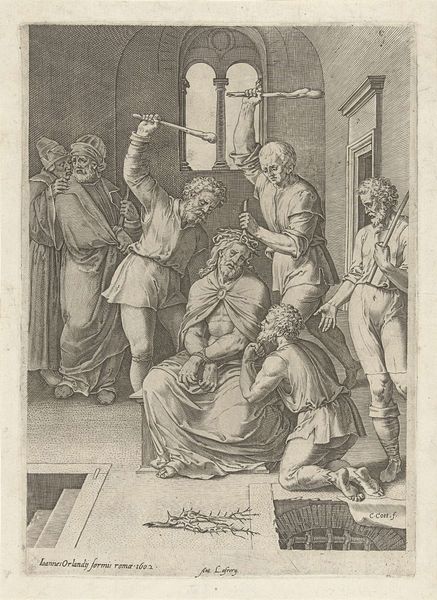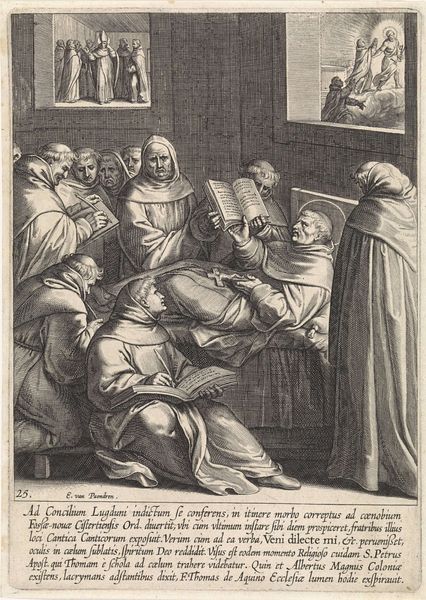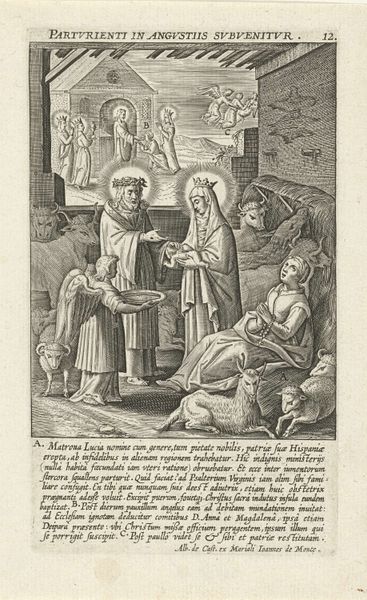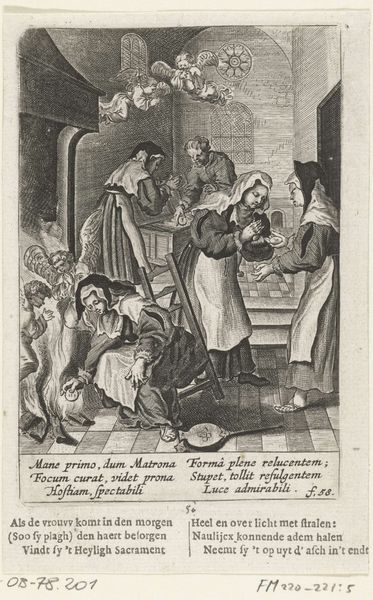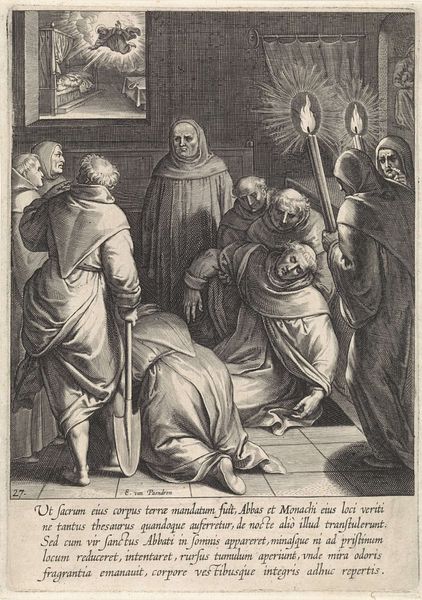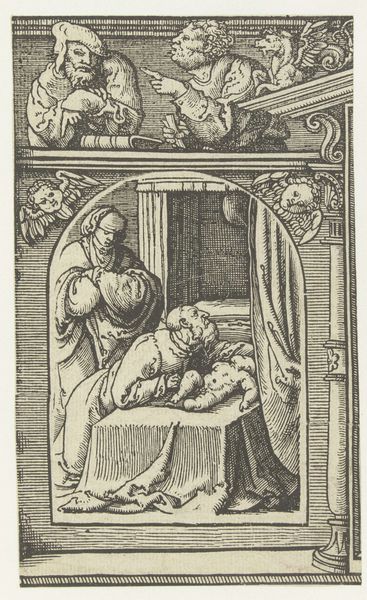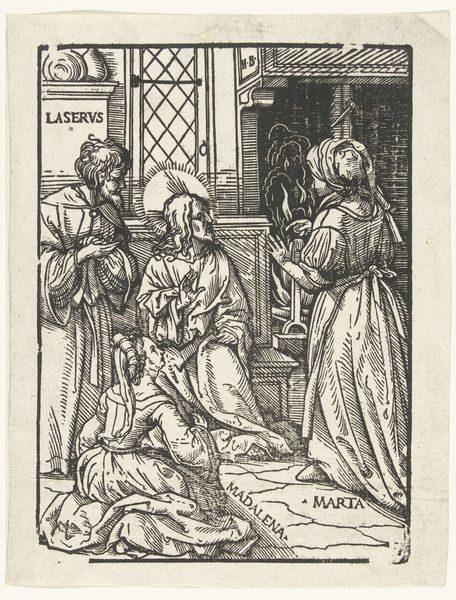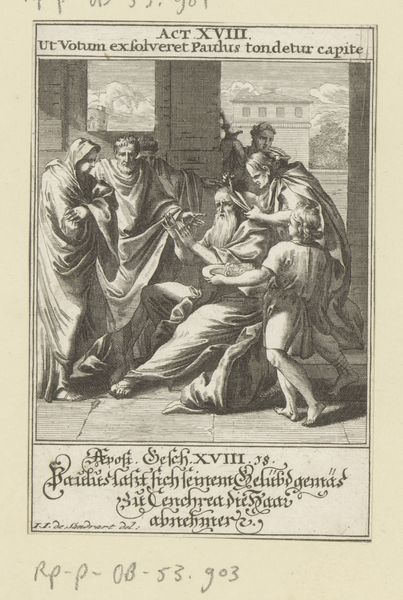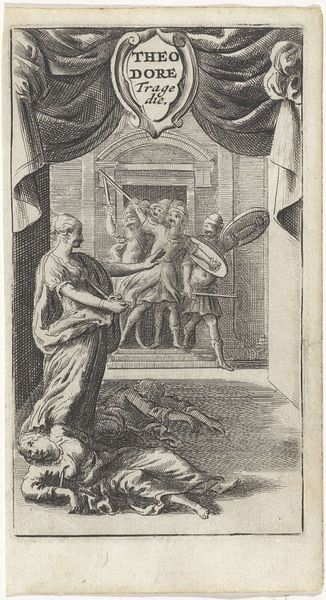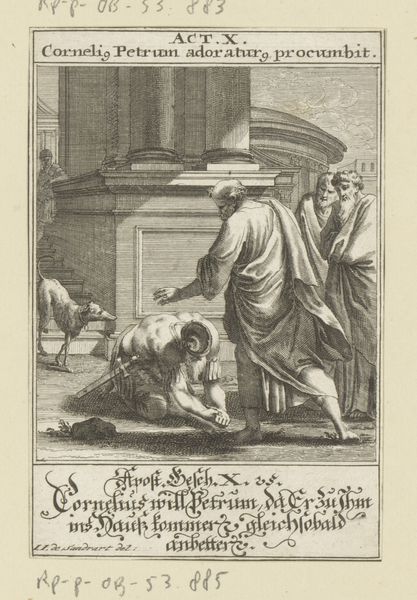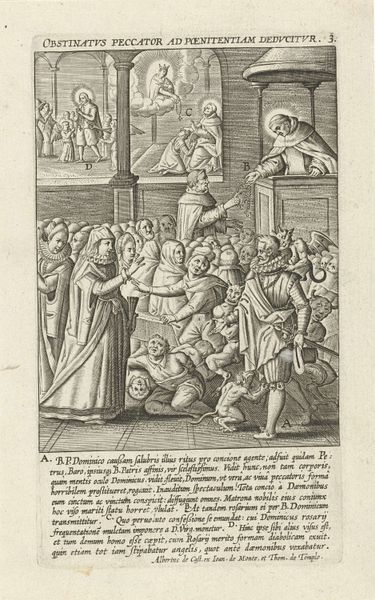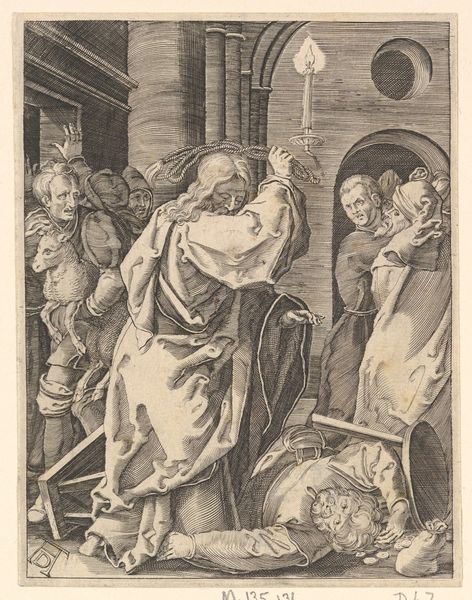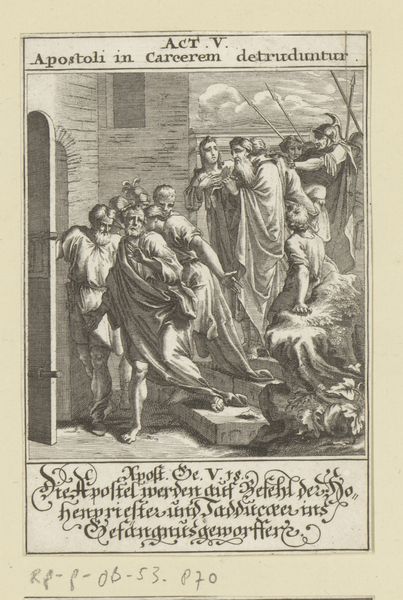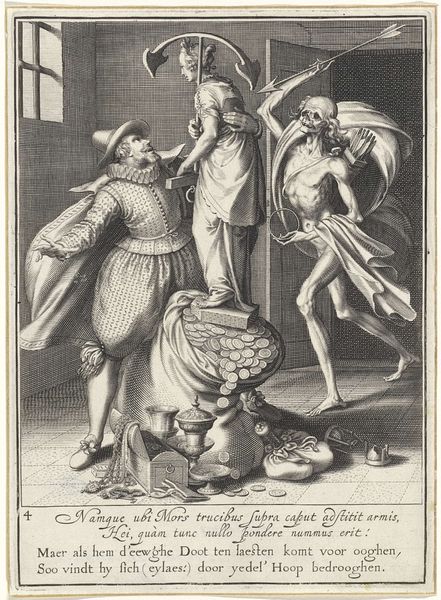
#
pencil drawn
#
light pencil work
#
pencil sketch
#
old engraving style
#
personal sketchbook
#
pencil drawing
#
pen-ink sketch
#
portrait drawing
#
pencil work
#
pencil art
Dimensions: height 106 mm, width 93 mm
Copyright: Rijks Museum: Open Domain
Editor: This is “The Beheading of John the Baptist” by Jacob de Weert, dating from sometime between 1580 and 1600. It has a distinctly somber mood, I think accentuated by the monochromatic execution, perhaps an engraving? What's your take? Curator: Monochromatic etchings like this capture drama, don't they? This reminds me of shadows in a moral play – where darkness isn’t just the absence of light but a spotlight on our darker impulses. It really plays with contrasts. Look how the rigid lines and tight compositions create tension. Editor: Tell me more about the cultural context. Why this scene? Curator: The gruesome yet strangely dignified act echoes so many stories of the era - sacrifice, retribution, the dangers of unchecked power. See how Salome seems almost… bored? Do you feel that subtle jab at the decadence of the ruling class? And the curious onlookers pressed against the barred windows? Editor: Yes, they look imprisoned, which is poignant. How does De Weert’s approach compare to other depictions? Curator: This piece favours dramatic impact, perhaps foregoing precise anatomical correctness. In my mind, it's less concerned with gruesome realism, and more about how violence acts on the soul - both on the executioner and the observers. But perhaps I'm projecting, lost in its maze-like hatching... what do you see? Editor: That's a new lens for me. I initially focused on the subject matter but you made me reflect on its moral message and social criticism through composition. Curator: Sometimes, the canvas acts like a mirror, reflecting back what we carry inside. It's lovely how the conversation helped us meet midway between De Weert's world and our own.
Comments
No comments
Be the first to comment and join the conversation on the ultimate creative platform.
